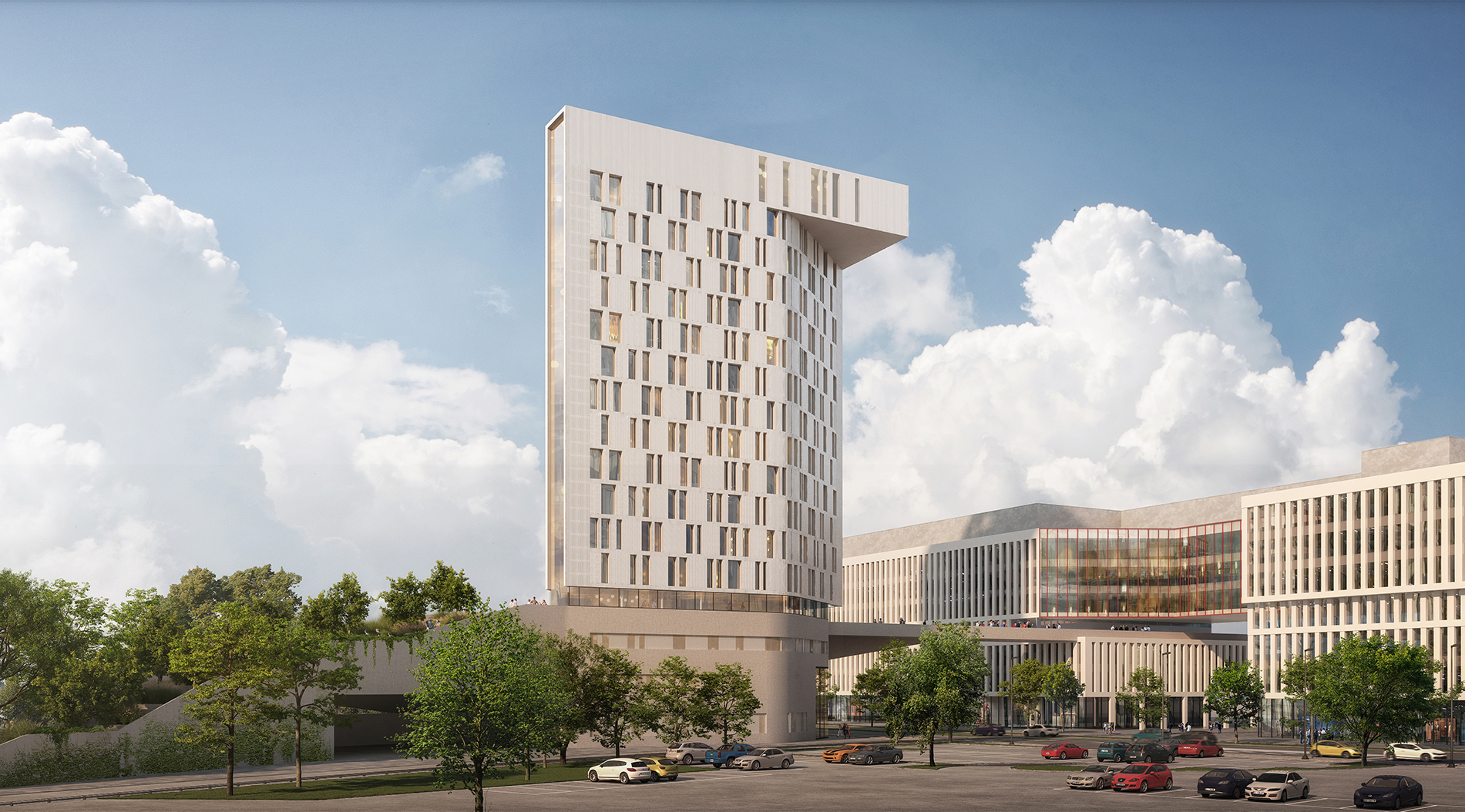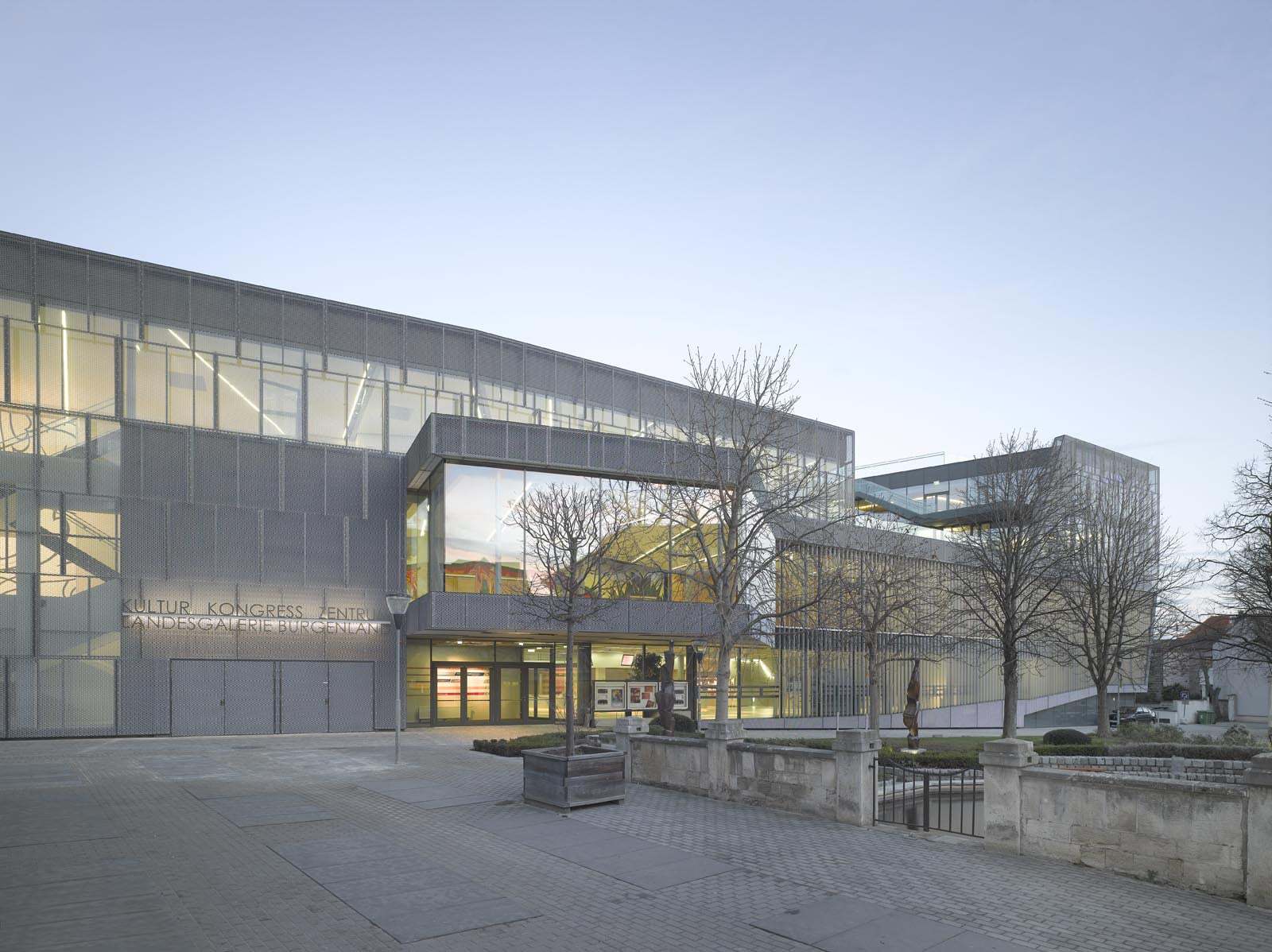However, possibly the most important aspect is that all the visual relationships that previously existed have been preserved: the view from the Stadtpark of the Clock Tower, the view from the Stadtpark of the Landesarchiv roof with the Schlossberg behind, and the view from Karmeliterplatz to the tree tops of Stadtpark, which lies at a lower level.
Pfauengarten Development
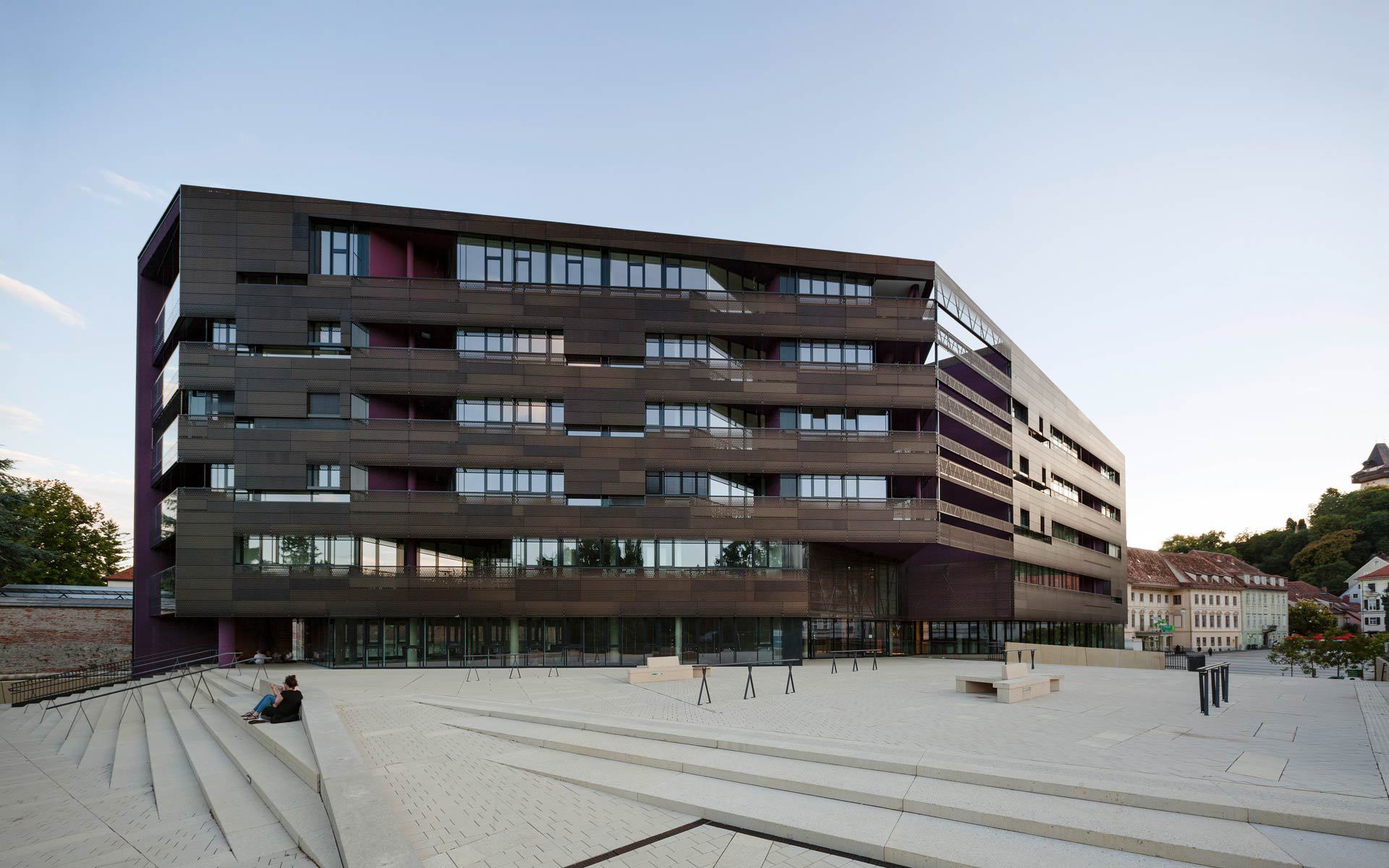
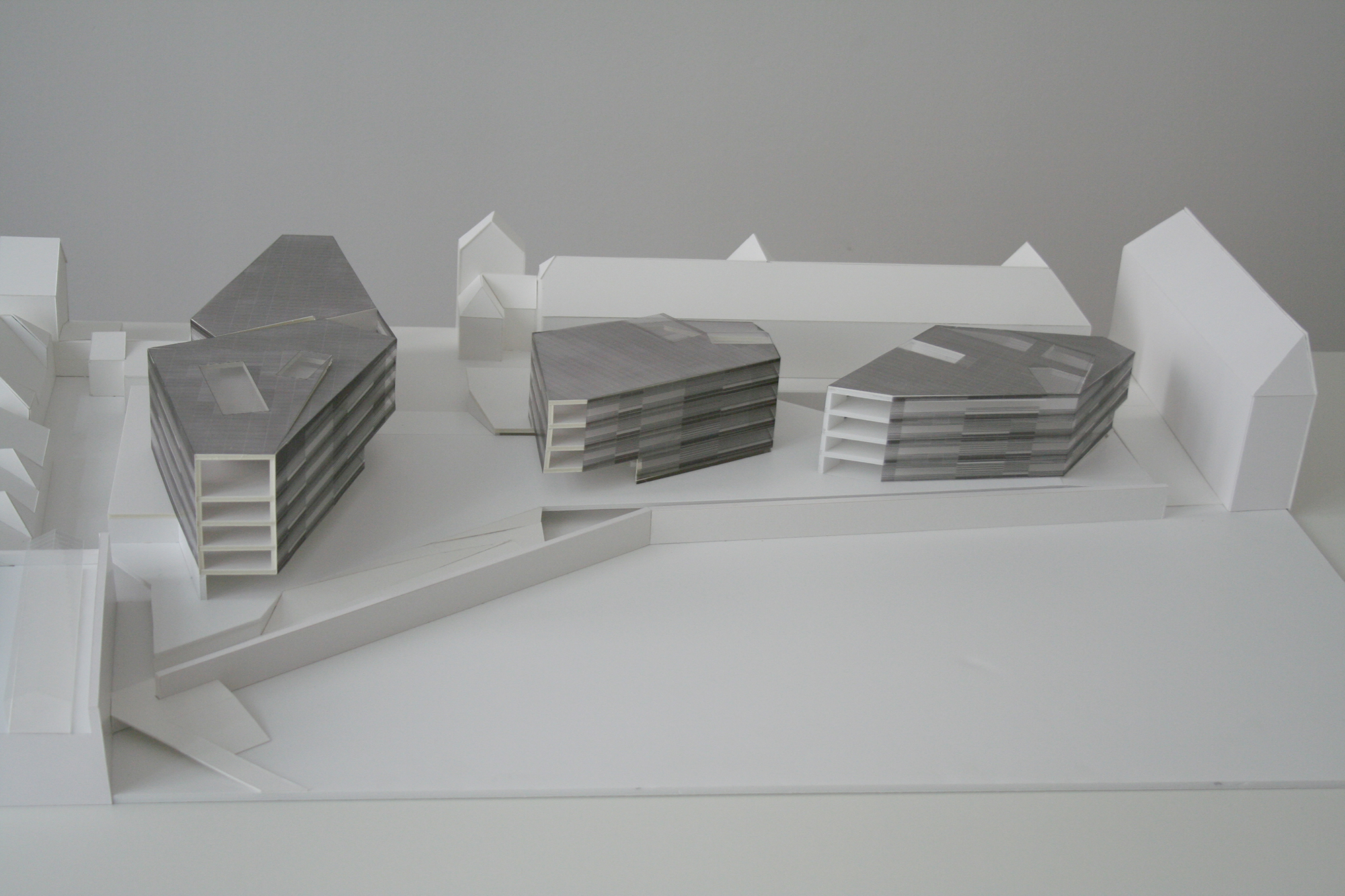
The “Pavoreal” project for the Pfauengarten in Graz attempts to answer the question about how best to insert new volumes in the sensitive mesh of the old town in a manner that is both principled and exemplary.
Year
2008
Venue
Graz
State
Completed
Category
Mixed
Size
18.983 m²
Year |
Venue |
State |
Category |
Size |
|---|---|---|---|---|
2008 |
Graz |
Completed |
Mixed |
18.983 m² |
Year
2008
Venue
Graz
State
Completed
Category
Mixed
Size
18.983 m²
Connection to the city park
Over the existing level, which lies below the top of the historical fortified wall, a new plateau is constructed. On the one hand this plateau is clearly separated from the town wall – whose character it consequently massively strengthens – by a distinct joint, while on the other hand it allows an unobstructed view into and across the Stadtpark in a way previously not possible. Equally new is the direct pedestrian connection between Karmeliterplatz and Stadtpark created by making a staged cut through the historical fortifications that is integrated in the project as the last part of a cultural axis called for by the municipal authorities which extends across the Schlossberg to the Forum Stadtpark.
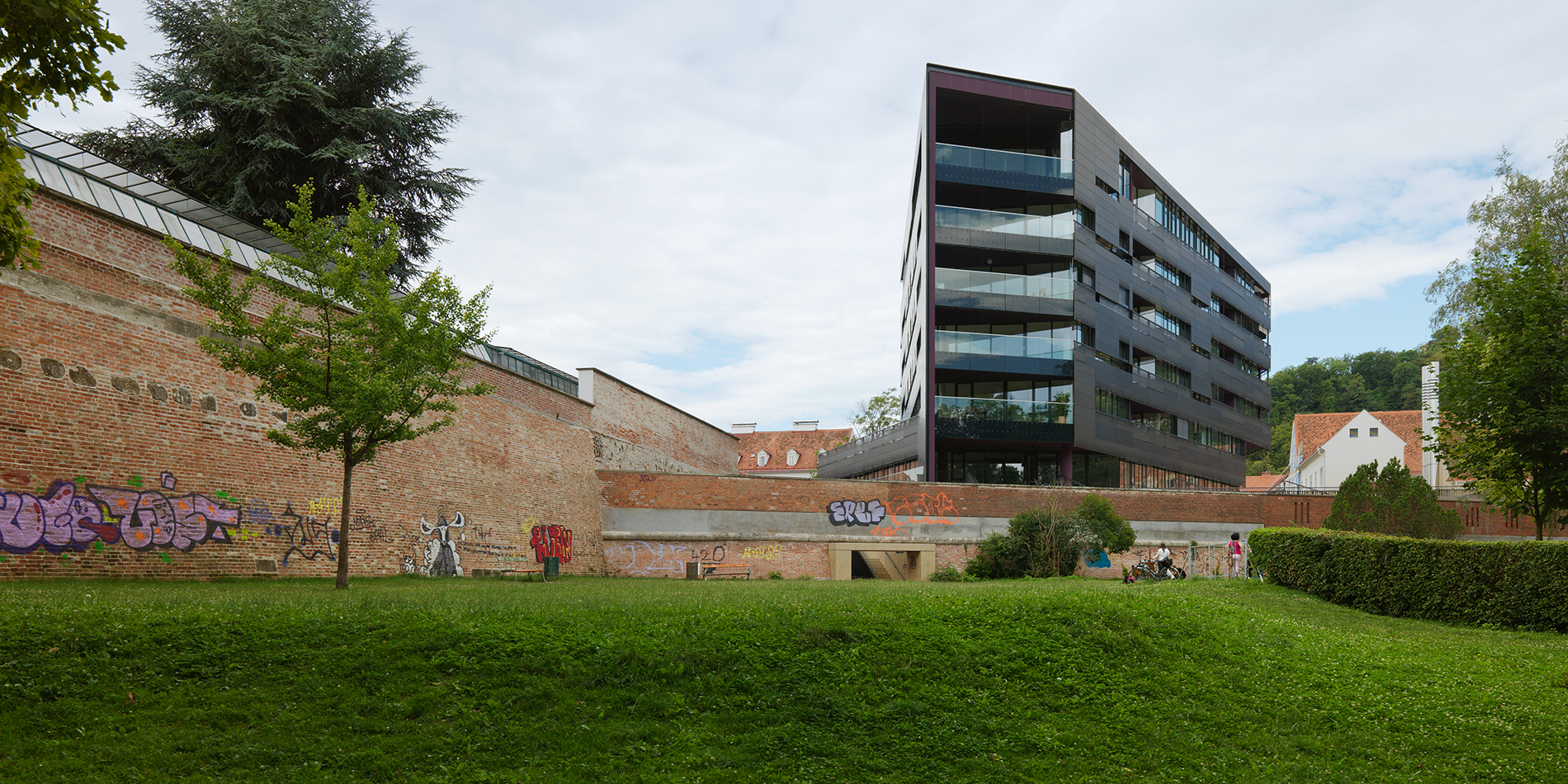
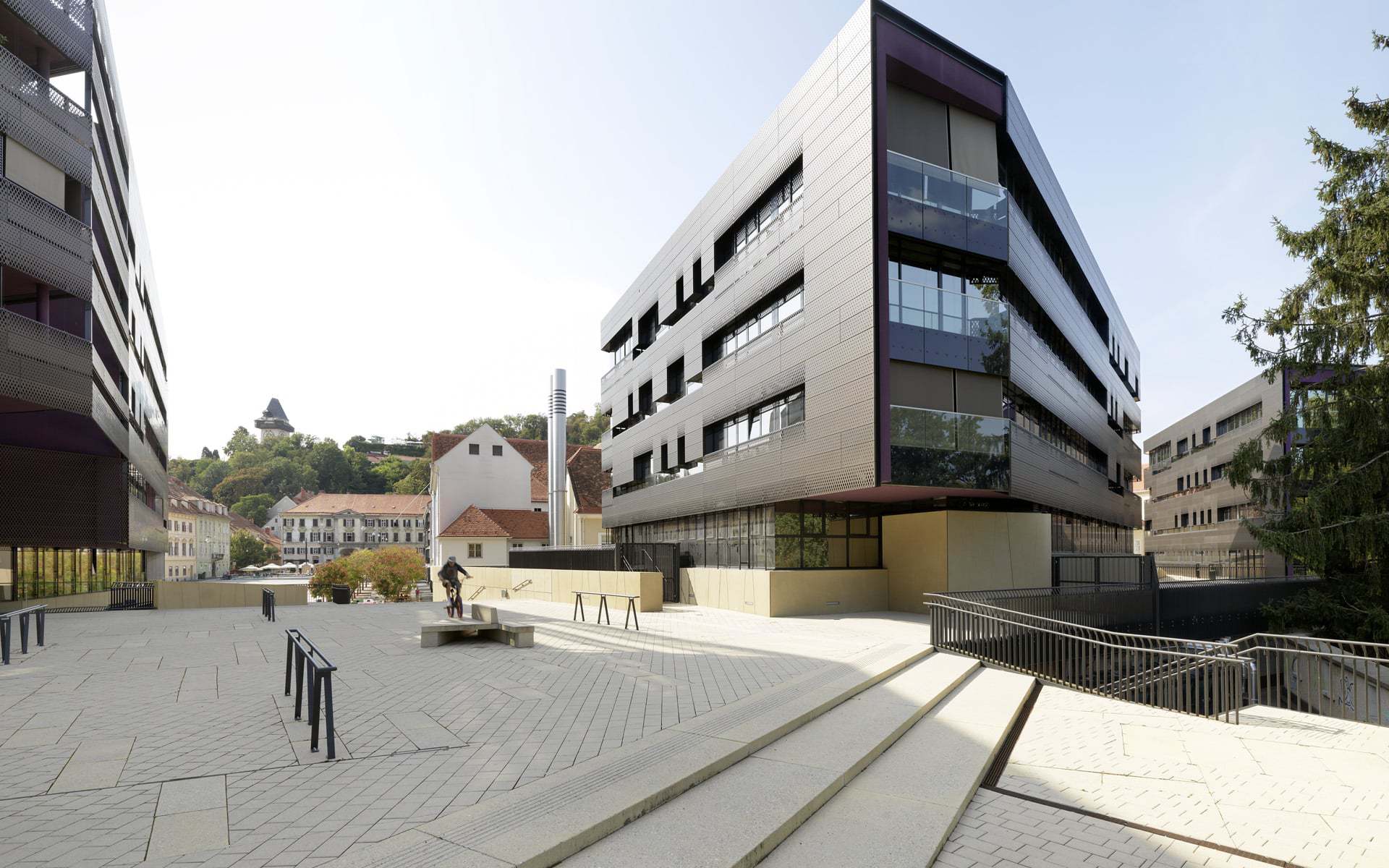
The elements of the mixed use brief are divided among three free-standing buildings. This strategy allows the total building volume to be sensitively articulated and embedded in the historic urban setting. The project is perceived as an urban composition of three individual buildings, each of which takes up different urban lines of reference and responds in different ways to its particular urban situation.
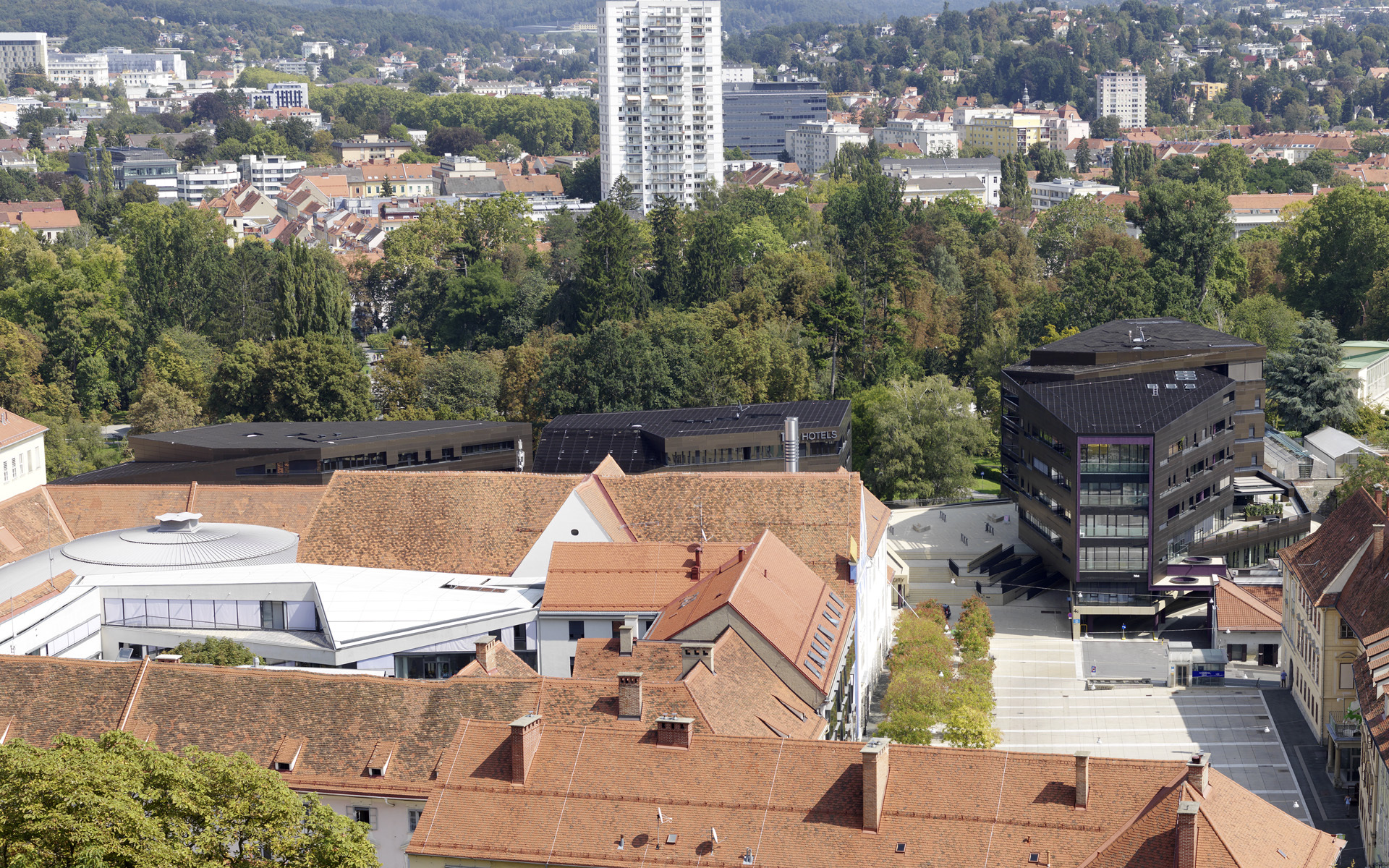
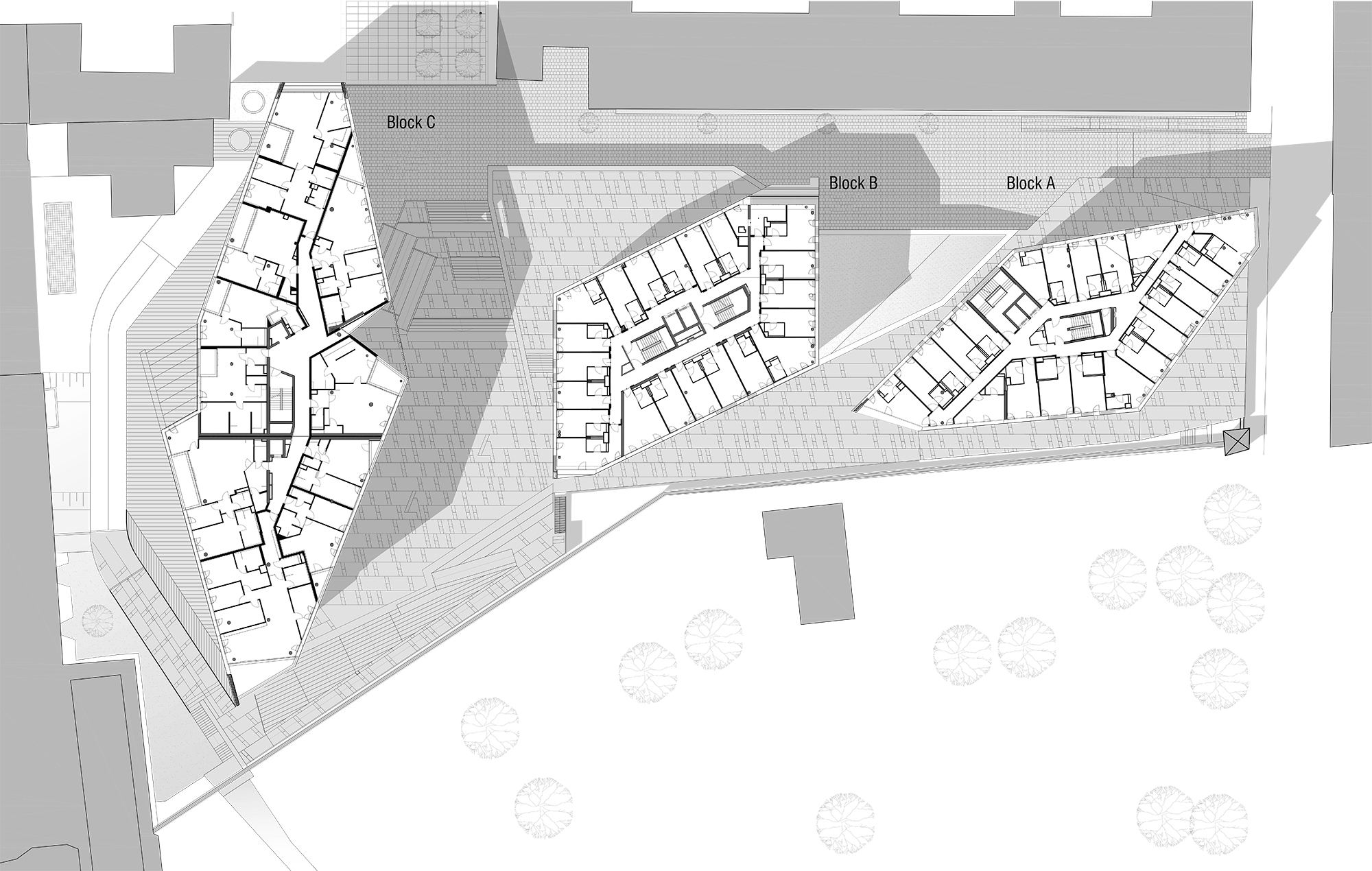
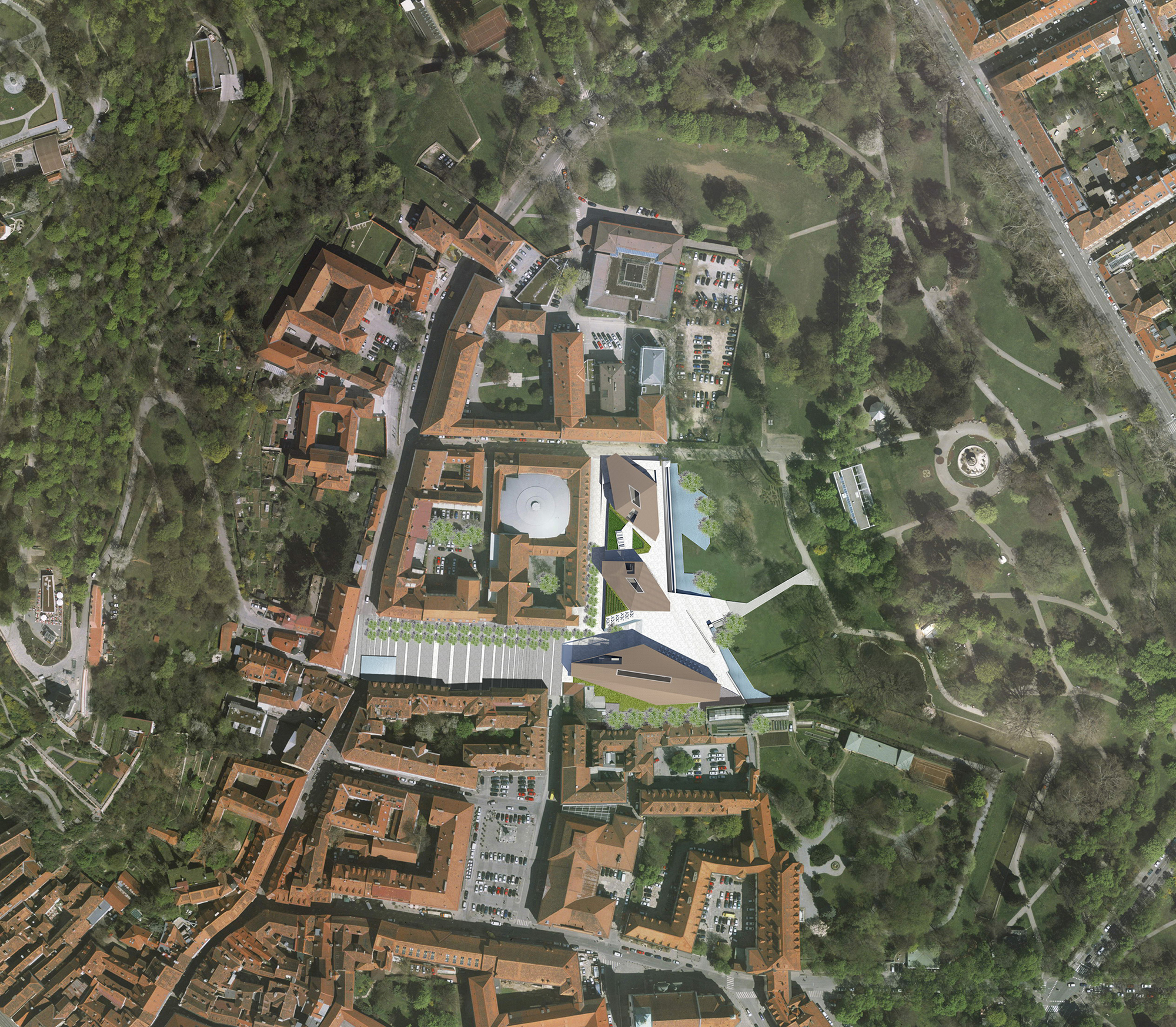
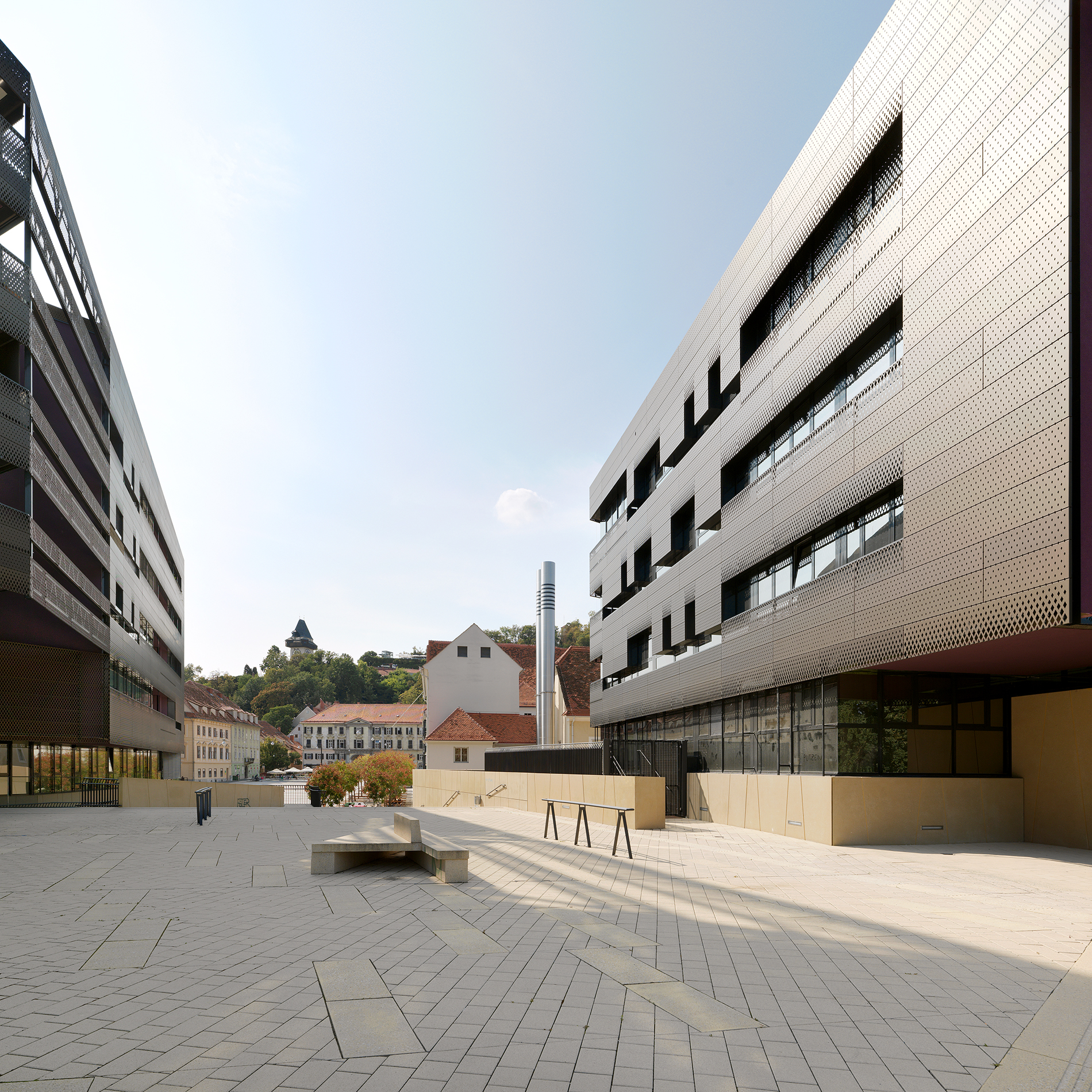
In this sensitive transitional zone from the old town to the Stadtpark, which despite being located inside the defensive walls was never built upon, lozenge-shaped floor plans were developed that do not refer so much to classic building typologies but more to the bent, polygonal lines described by the old fortifications. Consequently from the Stadtpark the building volumes appear as slender as possible, they withdraw and allow the historic city wall maintain its dominance. In contrast Karmeliterplatz is terminated on its eastern side, while still retaining its connection to the Stadtpark.
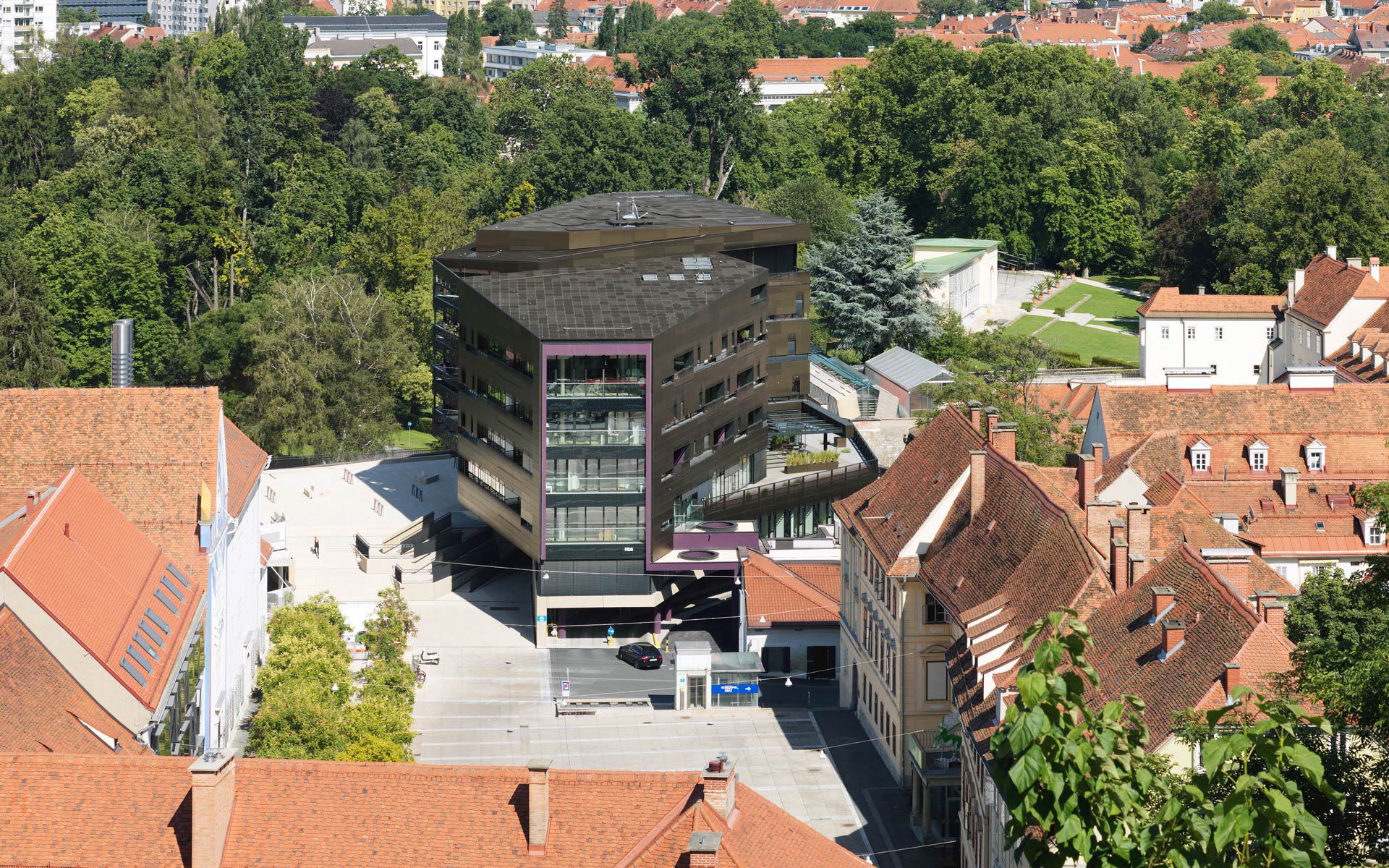
In order to integrate the building in the characteristic red tiled roofscape the facades and roofs are covered with an envelope of perforated metal, with different mesh sizes, whose colour harmonises with that of the historic roofs and facades.
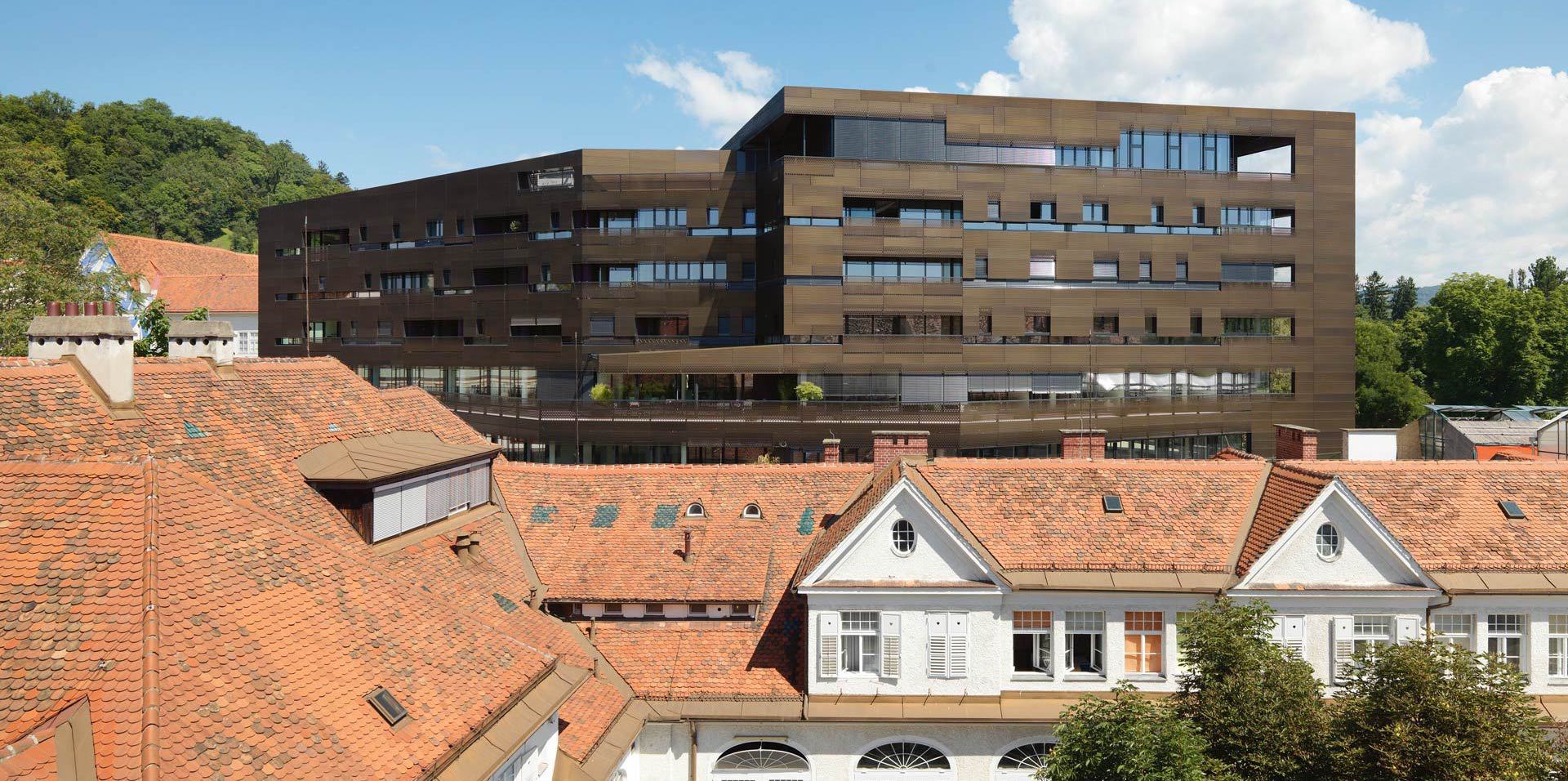
The openings of the perforated metal are altered continuously and parametrically, depending upon what lies behind, which can be a closed area of facade or roof, an area of glazing that must be shaded or that provides a view, or even a balcony or loggia. Therefore, depending on the particular needs the façade can be closed, semi-transparent or entirely open. This ensures a modern facade architecture that meets the requirement for balconies, terraces and large areas of glazing, while still ensuring discrete overall integration in the historical architectural setting.
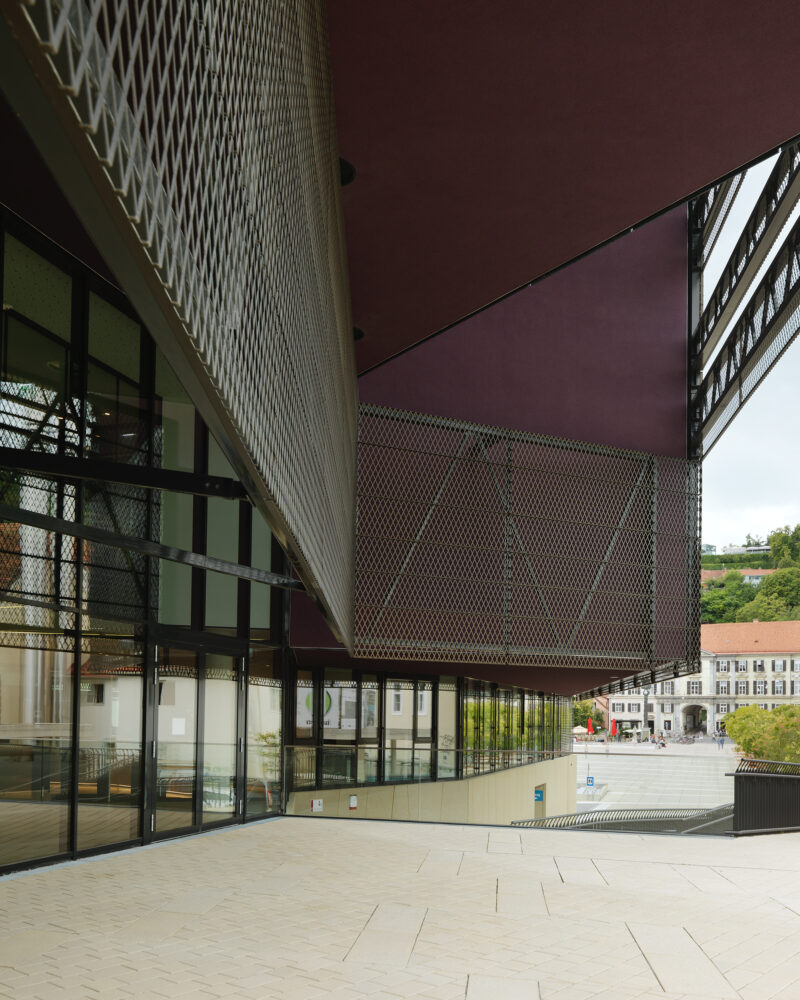
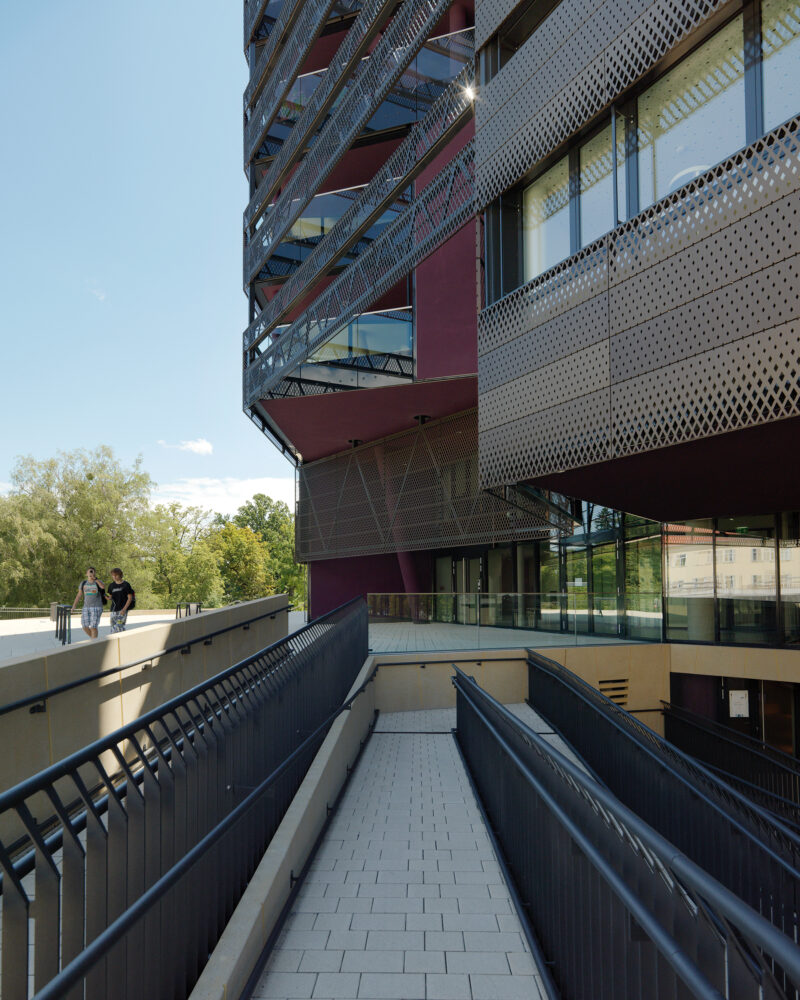
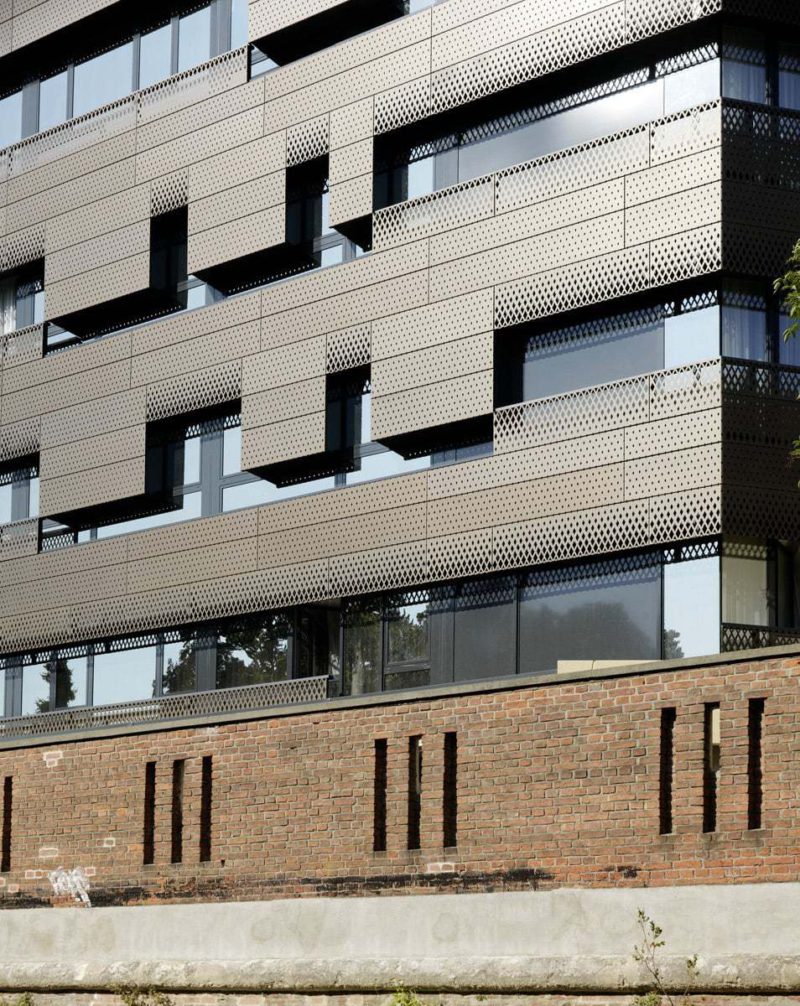
Mixed use with apartments, hotel, offices and commercial premises

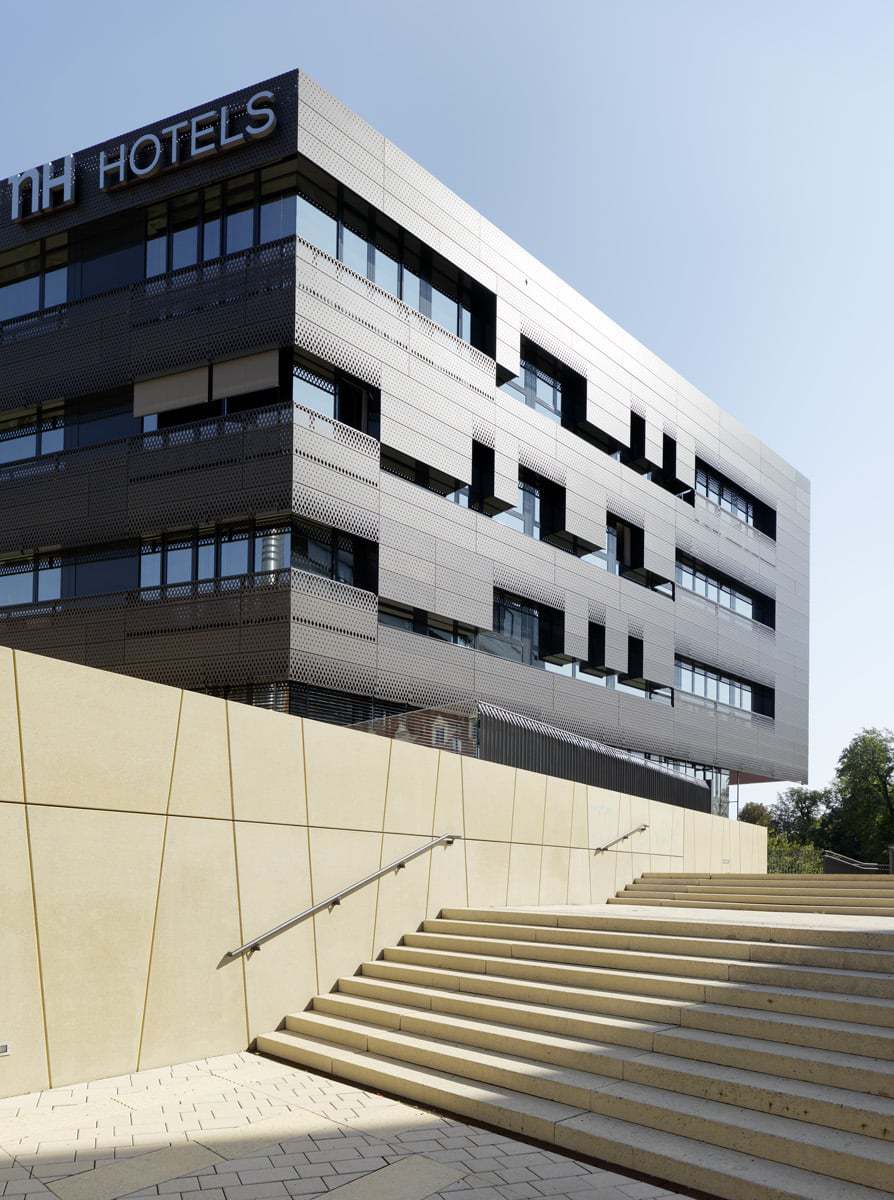
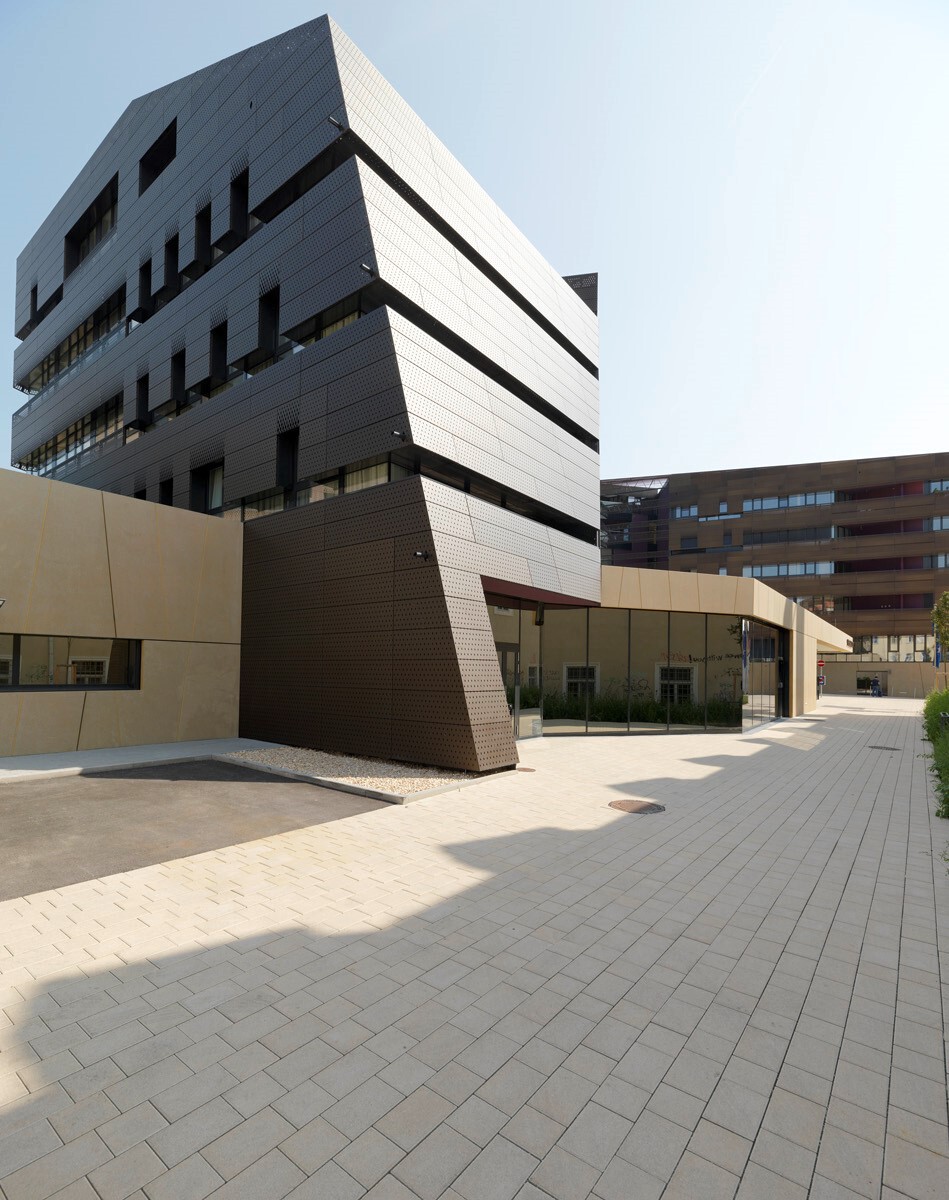
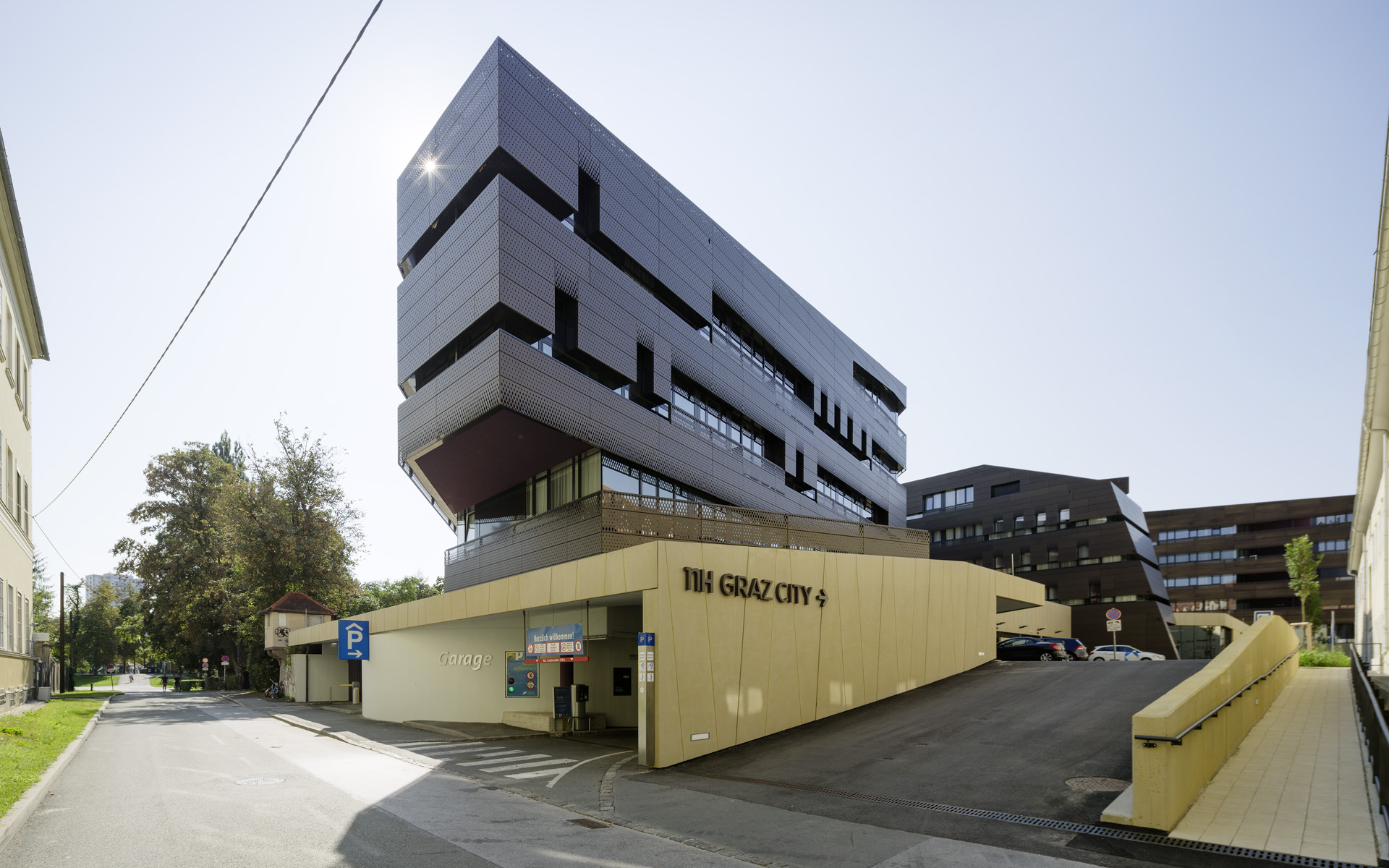
Architecture
Pichler & Traupmann Architects
Design team
Gabriele Bruckmayer
Christoph Degendorfer
Karin Drexler
Mario Gasser
Peter Schamberger
Bengt Stiller
Project team
Milan Suchánek (project leader)
Guillermo Alvarez
Luca Baumgartner
Christoph Degendorfer
Peter Grandits
Clemens B. Hasler
Bartosz Lewandowski
Sabrina Miletich
Kaja Nowatorska
Norbert Peller
Jürgen Schneeberger
Alexander Tauber
Wolfgang Windt
Client
PG Liegenschafts–Verwaltung GmbH, Graz
Fleissner + Partner Ges.m.b.H., Graz
Structural design, project coordination
Wendl ZT GmbH, Graz
di bauer und di resch werkraum ZT GmbH, Vienna (comp.)
Geotechnics
3p Geotechnik ZT GmbH, Vienna
MEP engineering
Pechmann GmbH, Graz
ZFG-Projekt Planungs- und Beratungsgesellschaft m.b.H., Baden (comp.)
Electrical engineering
Busz GmbH, Graz und Kubik Project Ges.m.b.H., Gießhübl (comp.)
Facade technology
SFL Technologies GmbH, Stollhofen
Building physics
VATTER & Partner ZT-GmbH, Graz
Structural fire protection
Norbert Rabl ZT GmbH, Graz
Hard facts
Start of planning: 2008
Start of construction: 2013
Completion: Part C: 2015, Parts A+B: 2018
Usable floor area: 15.953 m²
Gross floor area: 18.983 m²
Built area: 5.319 m²
Location: Graz, AT
Function: Mixed use (apartments, hotel, offices, shops)
Scope: Design and detail planning
Models
Ernst Brüll, Vienna
Georg Wizany
Video
Peter Schamberger, Vienna
Wolfgang Schwarzenbrunner, Vienna
Photos
Paul Ott, Graz
Award
Nomination for the European Union Prize for Contemporary Architecture – Mies van der Rohe Award 2017
